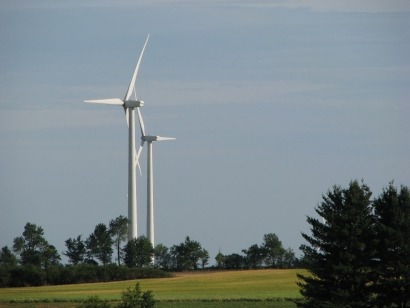
A study to investigate the causes of, and solutions to, the occurrence of an acoustic characteristic known as “Other Amplitude Modulation” (OAM), has been carried out by UK renewable energy trade association.
The report explains the differences between “Normal Amplitude Modulation” (NAM), which is the common swishing sound made by turbine blades as they pass through the air, and OAM, which is an infrequent and uncommon sound which typically lasts only for a few minutes. As a result of the research, acoustics professionals and the wind industry now have a clear understanding of the characteristics of OAM, as well as how to address it if it should occur.
“It’s right that the wind industry should take the lead in investigating issues like this when they arise” said RenewableUK Deputy Chief Executive Maf Smith. As a result of the in-depth research we’ve commissioned, we’ve identified the causes of OAM, and, most importantly, the industry has identified a way to deal with it effectively. On the limited and infrequent occasions when OAM occurs, we can address it by using software to adjust the way turbines operate, changing the angle of the blades.”
Mr Smith added that the industry has worked with members of the UK’s leading acoustics institute to develop a planning condition for local authorities to use. RenewableUK has published this along with its report. The condition states that if OAM occurs the responsibility for resolving the problem lies with the industry.
OAM is caused by sudden variations in the direction and speed of the wind. These variations mean that the wind hits different parts of the turbine blade at different speeds, causing it to stall momentarily. This stalling action produces a “whooshing” sound. OAM is not louder than NAM, in fact it is relatively quiet at no more than 35 to 40 decibels at a distance of around 1 kilometre. However, it is deeper in pitch and thus comparable to the sound of traffic noise heard at around the same distance from a single carriage A-road.
Software adjustments can resolve the problem, notably by changing the angle of the turbine blade at particular times when OAM could occur.
For additional information:

